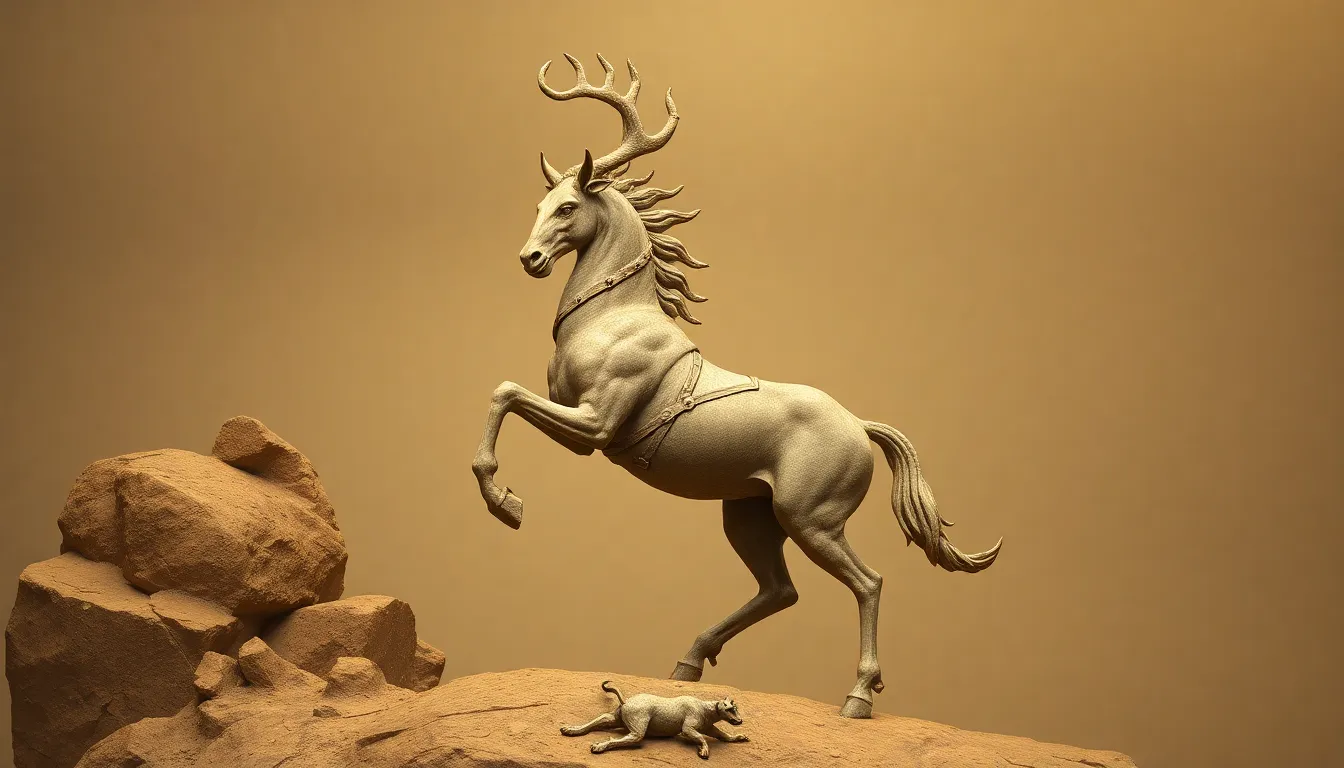The Myth of the Centaur: A Study of Origin Stories
I. Introduction
The Centaur, a fascinating creature of Greek mythology, embodies the duality of human and beast, representing the complex nature of humanity. This mythological figure has captivated audiences across generations, appearing in various forms of literature and art. Understanding the origin stories of the Centaur is crucial as it helps unveil the cultural narratives that shape our perception of this hybrid being.
Origin stories serve as a lens through which we can examine the values, beliefs, and fears of the societies that created them. The Centaur myth not only reflects the ancient Greeks’ understanding of the human condition but also offers insights into the broader human experience.
II. Historical Context of Centaur Myths
Centaur myths have their roots deeply embedded in ancient Greek mythology, a tradition rich with tales that explore the human experience through divine and monstrous figures. The Centaur, typically depicted as half-human and half-horse, symbolizes the struggle between civilization and barbarism.
In Greek mythology, Centaurs are often portrayed as wild and unruly creatures, contrasting sharply with the more civilized characters, such as the gods and heroes. Their role in mythology highlights the significance of hybrid creatures, which serve as metaphors for the tensions between different aspects of existence.
- Origins: The Centaur legend likely emerged from ancient interactions between herding cultures and settled agrarian societies.
- Symbolism: As hybrids, Centaurs embody the conflicts between nature and nurture, civilization and savagery.
III. Variations of the Centaur Myth Across Cultures
While the Centaur is primarily associated with Greek mythology, similar archetypes appear in various cultures, each representing unique cultural narratives.
- Indian Mythology: The figure of the Vritra, a serpent-like creature, represents chaos, much like Centaurs symbolize the wildness of nature.
- Native American Traditions: Creatures like the Thunderbird reflect the duality of nature and the supernatural, echoing themes found in Centaur myths.
These variations often share common themes such as the tension between humanity and nature, yet they differ in their cultural contexts and interpretations. The Centaur’s unique characterization in Greek mythology emphasizes the dichotomy of civilization versus barbarism, while other cultures may focus more on the harmony between these forces.
IV. Symbolism and Interpretation of the Centaur
The Centaur is a powerful symbol of the duality inherent in human nature. The creature embodies both the rational and the primal, reflecting the internal struggles faced by individuals.
Psychologically, the Centaur can be interpreted as a representation of the conflict between the civilized self and the animalistic instincts that reside within. This duality raises profound questions about identity and morality:
- Humanity vs. Animality: The Centaur’s existence challenges the boundaries between civilized behavior and primal urges.
- Conflict as Growth: The struggles faced by Centaurs in myths often lead to personal transformation and insight.
V. The Centaur in Art and Literature
The depiction of Centaurs in art has evolved over centuries, from ancient pottery and sculpture to modern interpretations in graphic novels and films. In ancient Greece, Centaurs were often portrayed in friezes and vases, emphasizing their wild nature and interactions with heroes.
In literature, Centaurs have appeared in numerous works, serving different roles:
- Chiron: A wise and noble Centaur known for his knowledge and healing abilities, often depicted as a mentor to heroes like Achilles.
- The Battle of the Lapiths and Centaurs: A famous mythological event symbolizing the struggle between civilization and barbarism, often illustrated in classical art.
These representations highlight the Centaur’s complexity, illustrating the balance between wisdom and savagery, and their significance in the stories they inhabit.
VI. The Evolution of the Centaur Myth in Modern Culture
In contemporary culture, the Centaur has been reimagined in various forms, reflecting changing societal values and interests. Films, literature, and video games have introduced new interpretations of the Centaur myth, often emphasizing their heroic qualities or exploring their struggles for acceptance.
Some notable modern works include:
- Harry Potter series: The Centaurs of the Forbidden Forest are portrayed as wise and enigmatic, challenging the perception of Centaurs as mere beasts.
- Chronicles of Narnia: The character of Glenstorm represents the noble aspects of Centaurs, advocating for justice and bravery.
This evolution demonstrates how modern storytelling reshapes traditional narratives, allowing for new interpretations and deeper explorations of the Centaur’s symbolism.
VII. The Role of the Centaur in Exploring Human Nature
The Centaur myth serves as a profound exploration of human identity and behavior. The creature’s dual nature invites reflection on the complexities of the human experience:
- Struggle Between Civilization and Primal Instincts: The Centaur represents the ongoing conflict between our civilized selves and our more instinctual, animalistic desires.
- Identity and Transformation: The journey of Centaurs in myths often mirrors our own quests for understanding and integration of our various selves.
As such, the Centaur stands as a metaphor for the broader human condition, illustrating the challenges we face in reconciling different aspects of our identities.
VIII. Conclusion
In summary, the Centaur myth is a rich tapestry woven from threads of history, culture, and human psychology. From its ancient Greek origins to its modern representations, the Centaur has evolved while retaining its core significance as a symbol of duality and conflict.
The enduring legacy of the Centaur highlights the complexities of human nature and the cultural narratives that inform our understanding of identity. As we continue to explore these themes, the Centaur remains a vital figure in the study of mythology, offering timeless insights into the human experience.




